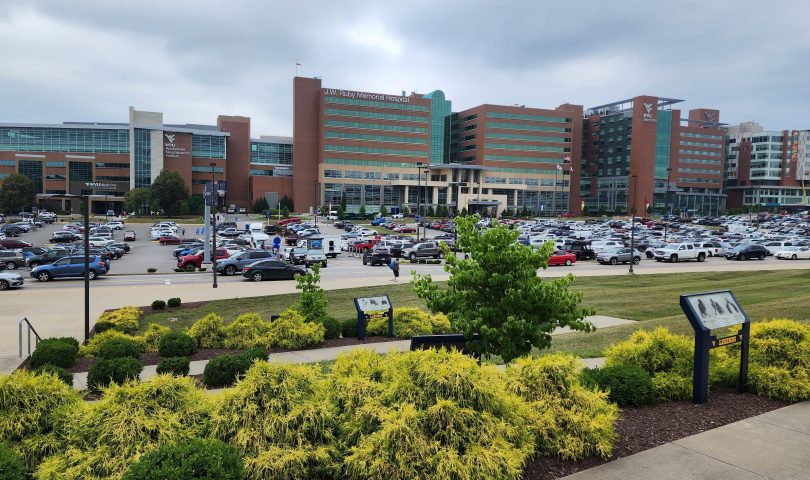MORGANTOWN – WVU Medicine was pleased to learn that, according to recently released federal data, WVU Hospitals ranked best in the nation for postoperative sepsis rates – meaning it had the fewest cases.
An article in Becker’s – a national medical industry publication – showed 17 hospitals scored better than the national average, and WVU Hospitals (Ruby Memorial and Children’s) scored best, according to Centers for Medicare & Medicaid Services data.
“We’re really proud,” Ron Pellegrino, Ruby’s chief operating officer, said. “It’s a testament to the ongoing efforts to provide safe and highly effective care. … When you see that you’re doing well compared to your peers, it does make you feel good.”
Pellegrino explained that sepsis is constellation of issues tied to postoperative infection. It’s not just the infection, it has to be severe infection. Symptoms include lower blood pressure, fever and changes in heart and respiratory rates. It can affect the kidneys, lungs, heart and bowels and can be fatal.
CMS scores each hospital using mandatory sepsis reporting data. The number is based on a “smoothed” rate per 1,000 eligible discharges, and Pellegrino explained that it’s not strictly a rate, but a score that incorporates other factors.
Becker’s reported the national average is 4.09. A lower score is better, and WVUH was first among the 17 that scored better than the average, with a 1.53. A hospital in Milwaukee scored second, at 1.65. Among the nationally prominent hospitals in the top group were Cleveland Clinic, eighth at 1.89; Mayo Clinic in Florida, 14th at 2.24; and Mayo Clinic in Minnesota, 17th at 3.09.
It was interesting to note, Pellegrino said, that the CMS data period was July 2019-June 2021, during the pandemic.
How did WVUH reach the top? “Early identification of sepsis is critical,” Pellegrino said. First, prevent it. Don’t let surgical patients become infected. If they do, don’t let it progress to where it has physiological impact – progressing from sepsis to severe sepsis to septic shock and then death.
Prevention is good perioperative (the time during the surgical procedure) infection control, he said. Prevent it at the front end and be vigilant to detect infection if it occurs so it doesn’t get worse.
“We’re always hoping to do good,” he said. “Our goal is always to provide the safest, most effective care we can.”
The credit, he said, goes to the surgical teams, and the in-patient doctors on the floors. “It’s attention to detail,” including by physician champions who look at each post-op infection case to see where to improve.
“We try to make it a priority, which is hopefully why we’ve had some success.”
Email: dbeard@dominionpost.com




